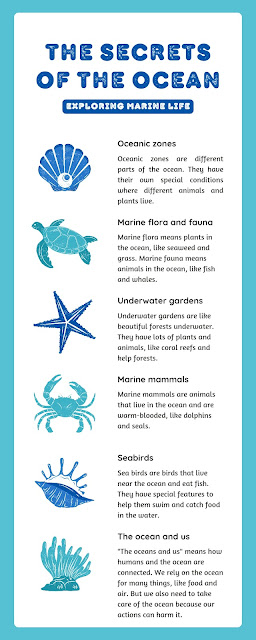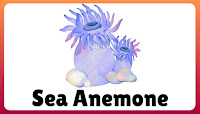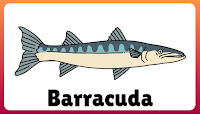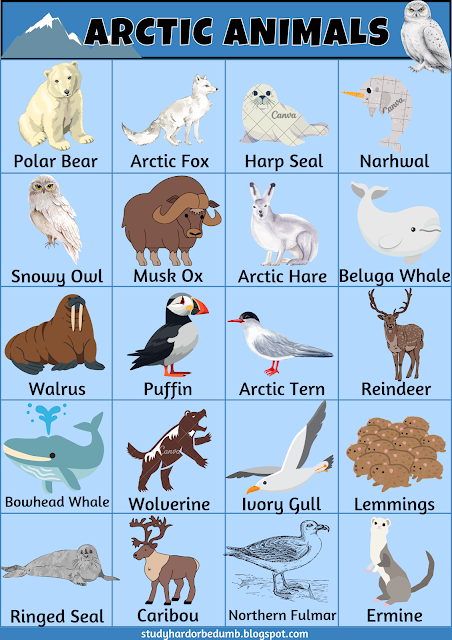Sea and Aquatic Animals I A Complete Guide with Pictures and Description
Welcome to the mesmerizing realm of sea and aquatic animals! From graceful dolphins to majestic whales, the ocean is teeming with a diverse array of fascinating creatures. Join us on an underwater adventure as we explore various incredible sea and aquatic animals, each with its own unique traits and characteristics.
Types of Water-based life:
- Marine Life: Marine life means animals and plants that live in the ocean.
- Aquatic Life: Aquatic life includes animals and plants that live in any kind of water, like rivers, lakes, and oceans.
- Sea Life: Sea life means animals and plants that live specifically in the ocean.
- Freshwater Life: Freshwater life includes animals and plants that live in rivers, lakes, and streams, which are not salty like the ocean.
- Coral Reef Life: Coral reef life includes colorful animals and plants that live in coral reefs, like fish and coral polyps.
- Estuarine Life: Estuarine life means animals and plants that live where rivers meet the ocean, where the water is a mix of fresh and salty.
- Deep-Sea Life: Deep-sea life includes strange animals that live in the very deep parts of the ocean, where it's dark and cold.
- Plankton: Plankton are tiny plants and animals that float in the ocean and are food for bigger sea creatures.
- Cetaceans: Cetaceans are big sea animals like whales, dolphins, and porpoises.
- Sharks: Sharks are big fish that live in the ocean and are known for being predators.
Description of Animals
| Animal | Description |
|---|---|
| Blue Whale | The largest animal on Earth, known for its massive size and deep, low-frequency vocalizations. |
| Great White Shark | A large predatory fish known for its powerful jaws and sharp teeth. |
| Dolphin | Highly intelligent marine mammals known for their playful behavior and complex communication. |
| Sea Turtle | Marine reptiles known for their distinctive shells and long migrations between feeding and nesting grounds. |
| Octopus | An intelligent cephalopod known for its ability to change color and shape, as well as its complex behaviors. |
| Jellyfish | Gelatinous marine creatures with tentacles equipped with stinging cells used for capturing prey. |
| Orca (Killer Whale) | A powerful apex predator known for its distinctive black and white coloration and complex social structure. |
| Seal | Semiaquatic marine mammals known for their streamlined bodies and playful behavior both in and out of the water. |
| Manatee | Gentle, slow-moving marine mammals often found in shallow, warm waters, known for their herbivorous diet. |
| Penguin | Flightless birds adapted to life in the water, known for their black and white plumage and efficient swimming. |
| Starfish | Marine invertebrates with radial symmetry and tube feet used for locomotion and feeding. |
| Whale Shark | The largest known fish species, characterized by its enormous size and distinctive checkerboard pattern. |
| Clownfish | Colorful reef fish known for their symbiotic relationship with sea anemones and distinctive orange and white stripes. |
| Seahorse | Unique fish with a horse-like head and a curled tail, known for their slow movements and intricate courtship rituals. |
| Stingray | Flat-bodied cartilaginous fish with a venomous stinger on their tail, often found on the ocean floor. |
| Sea Otter | Aquatic mammals known for their dense fur, playful behavior, and use of tools, such as rocks, for cracking open shellfish. |
| Sea Lion | Large, eared seals known for their social behavior, agility in the water, and loud vocalizations. |
| Walrus | Tusked marine mammals with a thick layer of blubber, known for their large size and distinctive tusks. |
| Manta Ray | Giant rays known for their graceful movements and impressive size, often found in tropical and subtropical waters. |
| Sea Urchin | Spiny marine animals with a round, shell-like exoskeleton, found in various ocean habitats. |
| Crab | Crustaceans with a broad, flattened body and powerful claws, found in oceans around the world. |
| Squid | Cephalopods with elongated bodies, ten tentacles, and a flexible, muscular mantle, known for their speed and intelligence. |
| Salmon | Iconic fish known for their migratory behavior, leaping ability, and importance in both freshwater and marine ecosystems. |
| Sea Anemone | Marine animals closely related to corals, known for their colorful appearance and stinging tentacles. |
| Lobster | Large marine crustaceans with a hard exoskeleton, prominent claws, and a long, segmented body. |
| Beluga Whale | Small, toothed whales known for their distinctive white coloration and melon-shaped head, found in Arctic and sub-Arctic waters. |
| Shark | Diverse group of fish known for their cartilaginous skeletons, predatory behavior, and streamlined bodies. |
| Sea Horse | Unique fish species with a horse-like head and a prehensile tail, found in shallow coastal waters. |
| Oyster | Bivalve mollusks with rough, irregular shells, prized for their meat and ability to produce pearls. |
| Man o' War (Portuguese Man o' War) | Colonial marine organisms with venomous tentacles, often mistaken for jellyfish, found in warm ocean waters. |
| Seal | Semiamphibious marine mammals with a streamlined body and flipper-like limbs, found in both polar and temperate waters. |
| Sea Dragon | Unique fish species with elaborate leaf-like appendages, resembling seaweed, found in shallow coastal waters. |
| Sea Slug | Marine gastropod mollusks with colorful, often elaborate, bodies and a shell reduced or internalized. |
Conclusion
So, from dolphins playing around to giant squids hiding deep down, sea animals are super cool! It's up to us to take care of them and their homes, the ocean, so they can keep on splashing and swimming for years to come. Let's make sure our oceans stay clean and healthy for all these amazing creatures to thrive in!























































Comments
Post a Comment